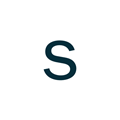South Africa
The Top 40 index lost 0.3% yesterday as it closed at 94,566.2 points, while the All Share index shed 0.28% to reach 101,993.0 points. A South African court revoked an environmental licence for offshore exploration by TotalEnergies and Shell, citing inadequate impact assessments, though remedial action is permitted. Meanwhile, the government aims to establish a R10 billion credit-guarantee facility by 2026, contributing R2 billion to unlock private infrastructure investment, particularly in energy transmission. A broader R500 billion project envisions 14,218km of power lines to support renewable integration. Political tensions resurfaced as military remarks in Iran drew U.S. tariffs, clouding investor sentiment. Separately, Standard Bank’s CEO and CFO plan to retire by 2027, despite the executive retirement age being raised to 63.
European Union
European equities rallied, with the STOXX 600 reaching a two-month high, led by defence and financial stocks. However, Eurozone industrial output contracted 1.3% in June, missing forecasts, while May’s figures were revised lower, underscoring softening momentum. GDP and employment both rose just 0.1% in Q2, consistent with prior estimates but slower than Q1, reinforcing concerns over resilience amid global trade disruptions. UK exports to the U.S. declined to a three-year low, impacted by earlier U.S. tariff policies. Despite equities performing well on earnings optimism, underlying macro data points to weakening industrial activity and external demand pressures across key European markets.
United States
U.S. markets closed mixed as July’s stronger-than-expected producer price index dampened hopes for imminent rate cuts. The S&P 500 edged to a record close, but inflationary signals from surging goods and services costs, alongside falling jobless claims, tempered the bullish narrative. While recent labour and consumer price data suggested monetary easing was likely, Thursday’s figures suggest inflation risks remain embedded. Traders are now recalibrating expectations for September’s FOMC meeting. Additionally, President Trump’s impending talks with Russia’s Putin over a potential Ukraine ceasefire add geopolitical risk to markets already navigating complex monetary dynamics and trade uncertainties.
Asia
Japan’s Q2 GDP rose 0.3%, surpassing expectations and Q1’s revised 0.1%, aided by resilience amid U.S. tariff unpredictability. However, China’s July data underwhelmed, with retail sales (+3.7%) and industrial output (+5.7%) both missing forecasts. Fixed-asset investment growth slowed to 1.6% YTD, weighed by a deepening 12% contraction in property investment. Persistent weak domestic demand and policy-driven capacity curbs continue to hamper China’s recovery trajectory. With China’s economic momentum waning and Japan showing modest gains, investors remain cautious about Asia’s outlook, especially as policy uncertainty and external demand volatility challenge the region’s growth and capital allocation dynamics.
Currencies
The South African rand weakened, reacting to U.S. inflation data that reduced the likelihood of significant Fed rate cuts in September. With no major local catalysts, the rand remains vulnerable to external monetary signals. The pound rose to a three-week high against the dollar after UK GDP data showed the economy contracted less than forecast in Q2, supporting sterling. Meanwhile, the U.S. dollar retained gains, buoyed by persistent inflation and receding rate-cut expectations. Currency markets are closely tracking central bank signals and macro data, with tightening global monetary conditions likely to sustain volatility across emerging and developed FX pairs.
Commodities
Gold retreated as unexpectedly strong U.S. inflation data and lower jobless claims buoyed the dollar and yields, reducing expectations of aggressive Fed easing. Conversely, oil prices climbed to one-week highs amid renewed geopolitical risk, as President Trump warned of repercussions should Russia obstruct Ukraine peace talks. Market sentiment was further underpinned by Japan’s positive economic data, supporting demand expectations from a key crude importer. The prospect of continued Russian supply disruptions lends bullish support to oil markets, though diplomatic developments from the Trump-Putin summit could pivot sentiment quickly. Volatility remains elevated across energy and precious metals.
Standard Bank Group (SBK) +2.93%
Standard Bank delivered 1H25 headline earnings of R24 billion, up 10% YoY, and achieved a 19.1% ROE, driven by balanced growth across net interest, fee, and trading income. Cost control remained disciplined, credit charges were contained, and digital initiatives drove a 21% increase in digital revenue. Africa Regions contributed 41% to group earnings, reflecting strong regional diversification. The CET1 ratio stood at 13.2%, and an interim dividend of 817c was declared. While macro headwinds and tariff uncertainty persist, the group reaffirmed its FY25 targets, maintaining confidence in achieving ROE of 17–20% and 8–12% EPS growth through 2028.
DRDGOLD (DRD) -2.12%
DRDGOLD expects FY25 EPS and HEPS to rise 64–74% YoY to between 252.4c and 267.8c, driven by a 26% increase in revenue to R7.88bn, underpinned by a 31% higher Rand gold price despite a 3% dip in gold sales. Cash operating costs rose 4%, but capital expenditure declined 24% as key projects, including the Ergo solar plant and BESS, reached completion. The group produced 155,288 ounces of gold, meeting guidance, and improved liquidity significantly with R1.3bn cash and no debt. Free cash flow swung to +R1.23bn. DRDGOLD remains well positioned with undrawn facilities to support ongoing infrastructure expansion.
Master Drilling (MDI) -4.85%
Master Drilling expects EPS for 1H25 to rise between 465% and 485% YoY in ZAR terms, to between 212.00c and 219.50c, largely due to a non-cash partial reversal of a USD4.7m impairment linked to its Mobile Tunnel Boring Machine, now backed by a signed contract. HEPS guidance of 159.50c–193.20c reflects a narrower range of –5.4% to +14.6% YoY. In USD terms, EPS is set to rise to 11.50–11.90c. HEPS is guided at 8.70–10.50c. Despite one-off effects, underlying performance remains resilient, with ongoing assessment of further impairment reversals likely to support medium-term earnings outlook.
Resilient REIT (RES) +0.55%
Resilient REIT reported a 5.2% increase in retail sales for 1H2025, supported by asset management initiatives and resilient tenant demand. Headline earnings per share rose 17.8% to 226.23c, and the dividend grew 12.2% to 245.72c. Portfolio vacancies remained low at 2.3%, and 287 lease renewals achieved an average rental uplift of 4.9%. Energy strategy execution progressed with 5.6MWp added and further BESS rollouts under way. Offshore assets in France and Spain showed robust sales growth of 3.8% and 8.5%, respectively. NAV per share increased to R69.83. The Group expects a strong FY2025, underpinned by operational efficiencies and clean energy investments.
Deere & Co (DE) -6.76%
Deere & Co reported a sharp drop in Q3 net income to $1.29 billion ($4.75/share) from $1.73 billion a year prior, as escalating U.S. tariffs and soft farm machinery demand pressured margins. The firm now expects full-year pre-tax tariff costs of $600 million, up from $500 million, with $200 million incurred in Q3 alone. Net sales declined 9% to $10.36 billion, marginally above forecasts. Deere cut its FY profit guidance upper range to $5.25 billion. With crop prices subdued and farmers deferring purchases in favour of rentals, demand remains tepid. Shares fell 7% on the update amid broader sectoral tariff exposure.
Birkenstock Holding Plc (BIRK) -3.62%
Birkenstock surpassed Q3 earnings expectations, posting adjusted EPS of €0.62 versus forecasts of €0.60, as premium pricing and robust demand for core models like the Boston clog lifted gross margin by 100bps to 60.5%. Revenue reached €635 million, narrowly missing consensus (€636.7m), as the weaker U.S. dollar constrained top-line growth. Despite a 15% U.S. tariff on EU imports, management reaffirmed full-year guidance, aided by pricing power, disciplined cost control, and resilient U.S. wholesale sales (+15%). The firm expects FY25 revenue growth at the upper end of 15–17% range, maintaining its EBITDA margin target (31.3–31.8%) amid tariff mitigation strategies.
ASML Holding NV (ASML) +0.36%
ASML warned it may not achieve revenue growth in 2026 as global chipmakers, particularly in the U.S., delay investment decisions amid uncertainty over tariff policies and pending export licences. Applied Materials, a key ASML peer, echoed caution, forecasting Q4 revenue of $6.70 billion ±$500 million—well below consensus ($7.33bn). Non-linear demand and capacity digestion in China are cited as short-term drags. While Q3 revenue rose 8% YoY to $7.30 billion and adjusted EPS beat estimates ($2.48 vs $2.36), the Q4 profit guidance ($2.11 ±$0.20) disappointed. The outlook underscores cyclical volatility and regulatory risks in the global semiconductor supply chain.
Do you prefer a full in-depth report you can read offline? Click here to download the full report.






